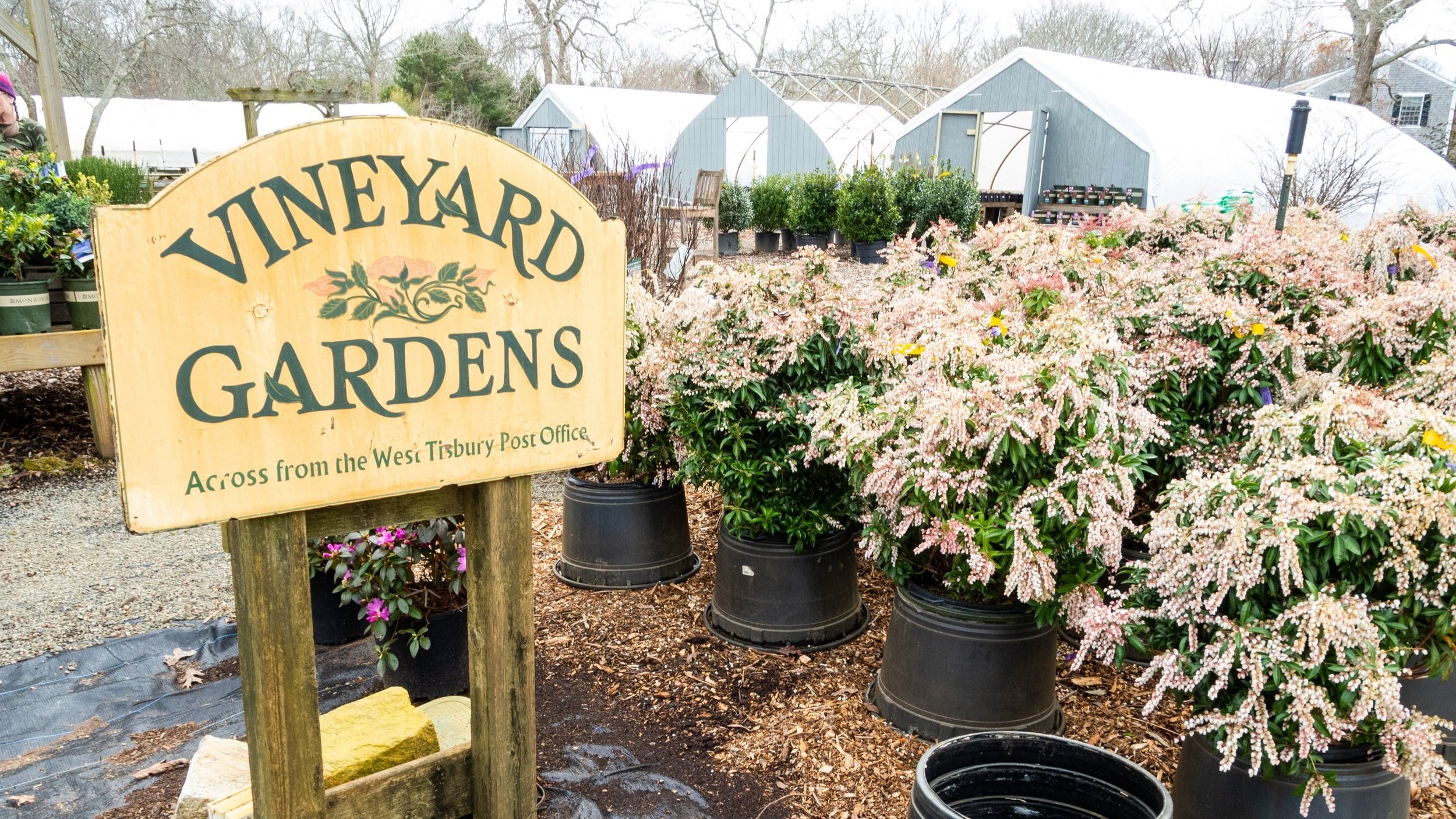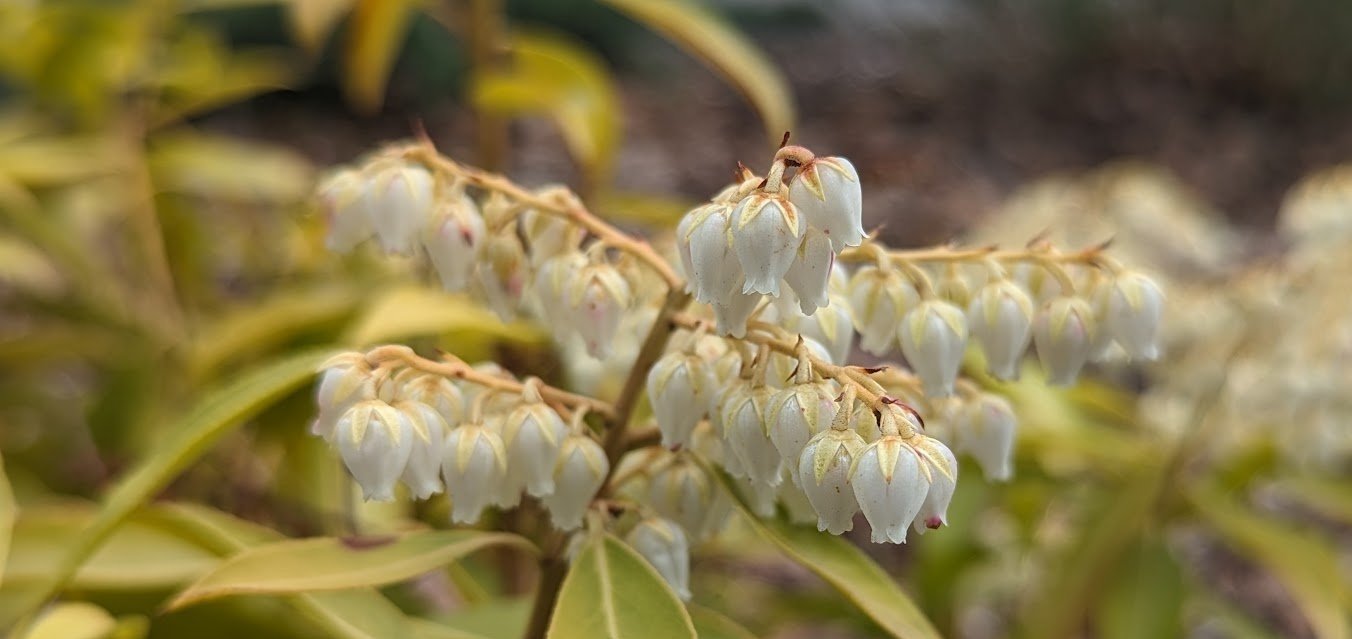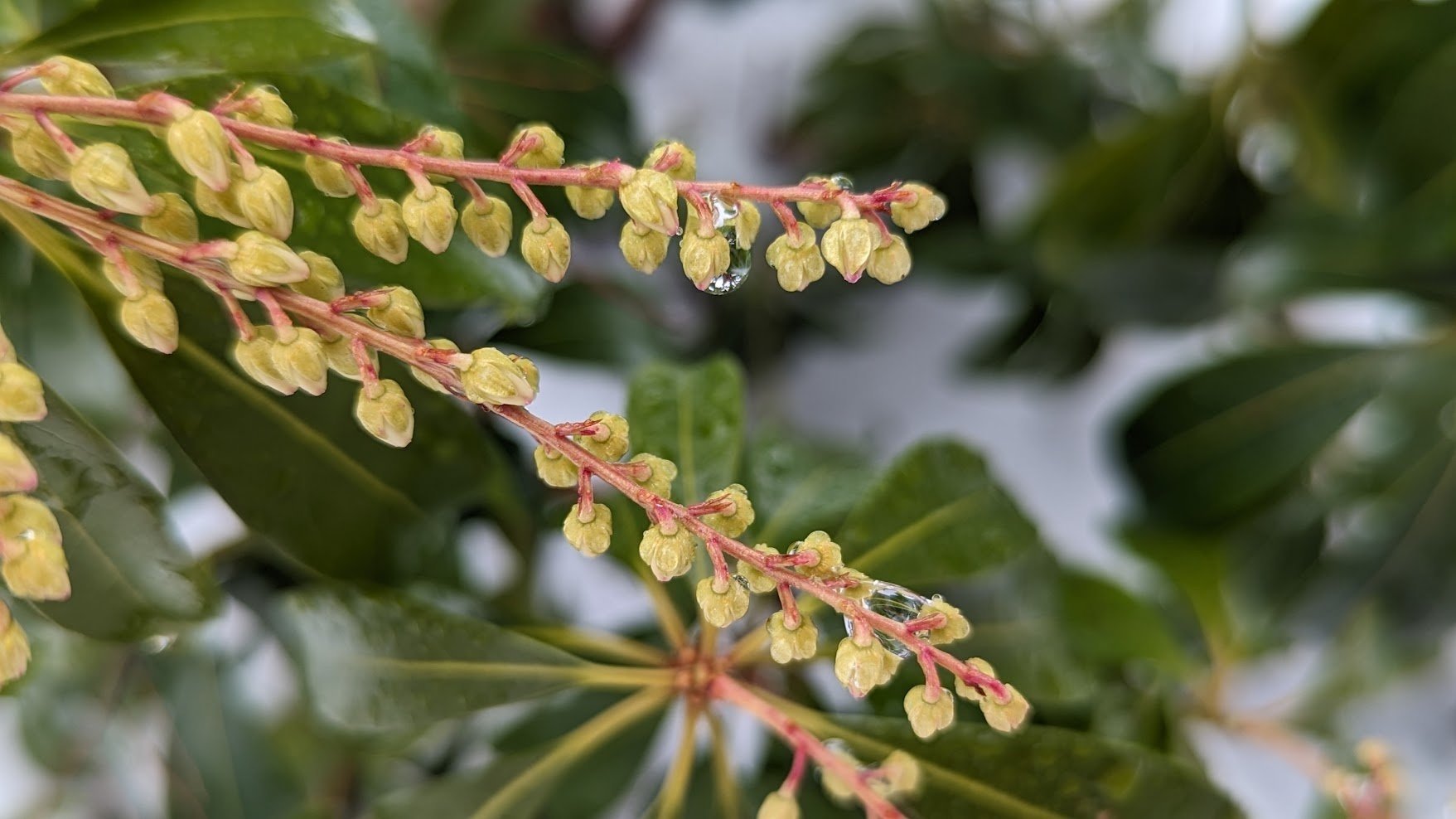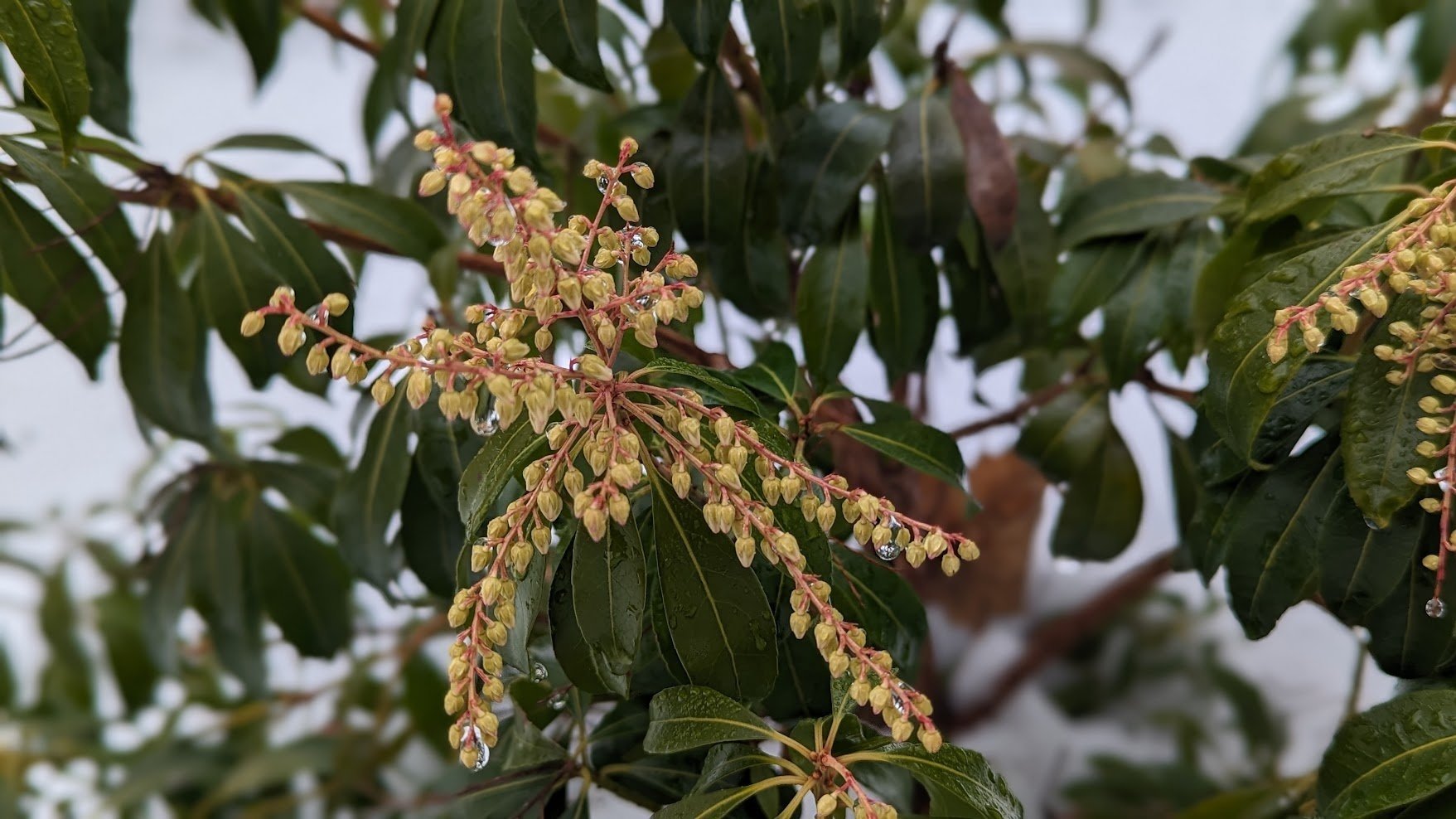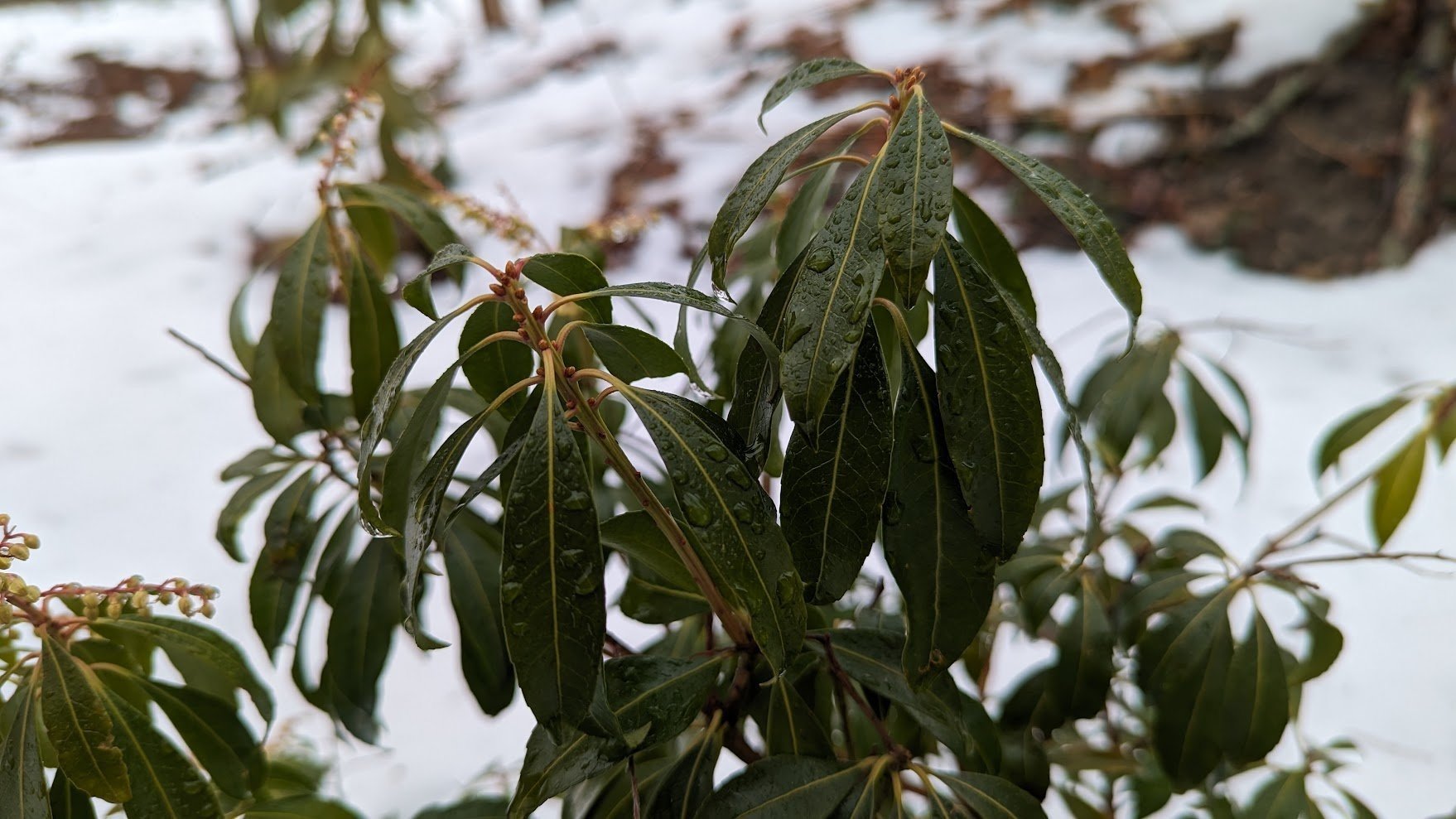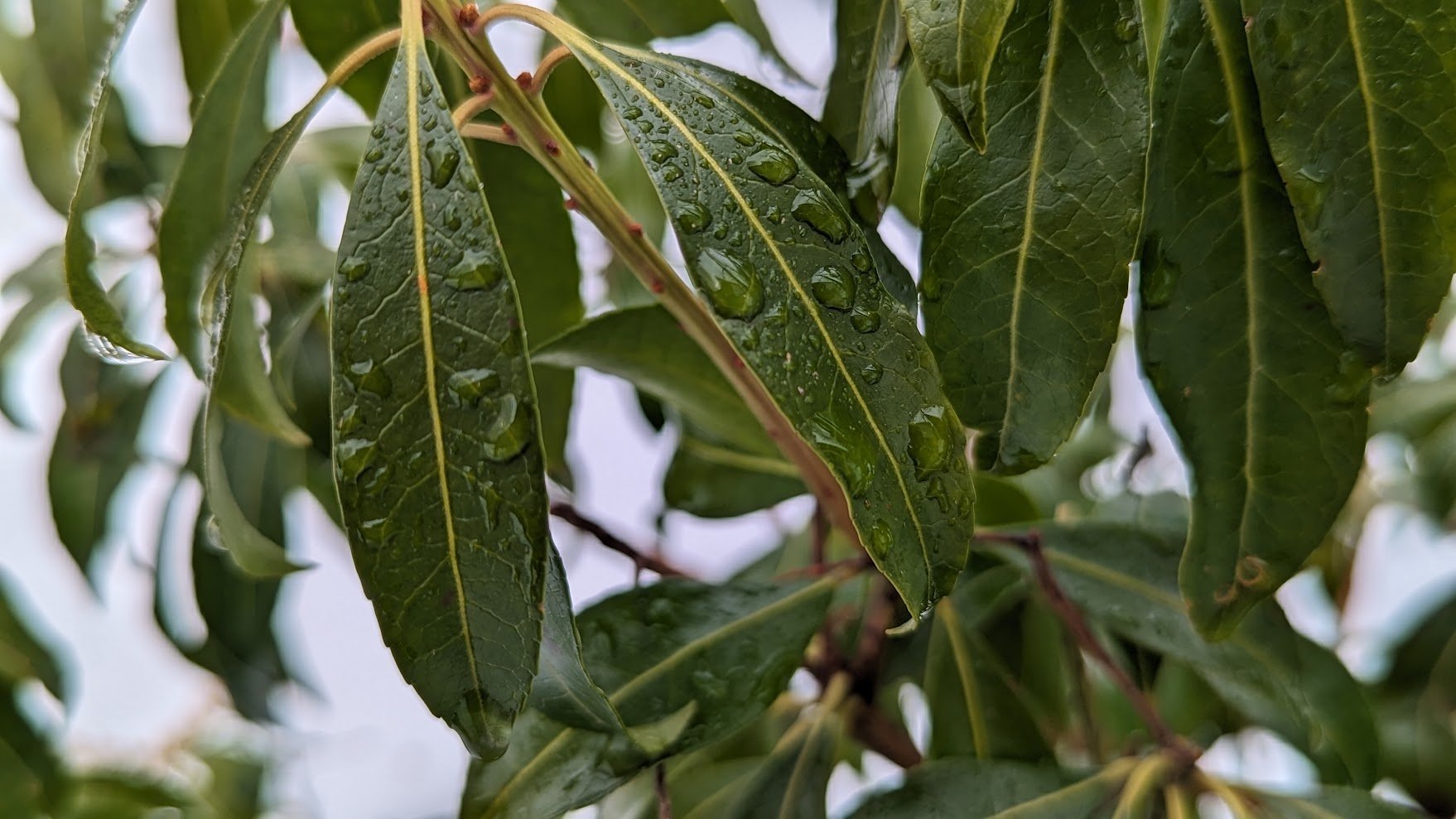EVERGREEN TREES &
SHRUBS FOR SHADE
************************
Broadleaf Evergreens are known to tolerate shade and many will also grow well in full sun. With their year round foliage they can add interest to your beds, woodland borders or create screening in a shady spot between you and your neighbor. Broadleaf evergreens can give you the privacy you need. They can also create fabulous backdrops to deciduous plants that flower. Plant them young and they will grow larger every year. We also carry several species of smaller broadleaf evergreen shrubs that can take shade. These work well in foundation plantings or in your shrub or perennial beds.
Deer resistant broadleaf evergreens we like to recommend are Pieris japonica, Mahonias and Osmanthus heterophyllus.
Pieris japonica illustration by karen blackerby logan
***************************
Prunus schipkaensis (Skip Laurel)
EVERGREEN TREE & SHRUB VARIETIES
Azaleas
Leucothoe
Osmanthus heterophyllus (False Holly) : Seldom severely damaged by deer. Looks like holly. We have found the species heterophyllus to be hardy, able to survive in dense shade and they are deer resistant. The flowers are fragrant! We carry a popular variegated variety called Goshiki.
Pieris japonica (Andromedas): Blooms in spring with panicles of beautiful bells mostly in white. We do carry a pink blooming one. Can grow 6-8ft tall and 5-6ft wide. We carry dwarf ones as well. Deer resistant.
Skimmia japonica: Needs a male and a female to be planted together for the female to berry up.
Skimmia reevesiana: Rarely damaged by deer. Does not need a male to cross pollinate like Skimmia japonica.
Prunus schipkaensis (Skip Laurels): They will easily get 6-8ft tall. Good for flowers and for screening.
Photinia fraserii: At the margins of its hardiness zone. It has handsome evergreen foliage. The new growth is reddish and in cold weather the leaves turn reddish again. It can grow over 6ft tall and wide.
Leucothoe, Skimmia and some Pieris japonica are examples of smaller broadleaf evergreen shrubs that can take shade.
***************************
Camellia japonica
CAMELLIAS & AUCUBAS
Camellias and Aucubas should be planted near foundation plantings or by a stone wall for the heat they absorb during a sunny day. They may get some die back during a very cold winter. Prune the dead ones out in the spring. Camellias have shiny lovely evergreen foliage and flowers that look like Peonies. Aucubas need a male to berry up. Aucuba Mr. Goldstrike will pollinate Aucuba serratifolia, which is known for producing large red, berry like fruit.
Aucuba japonica
serratifolia
Mr. Goldstrike
Camellia April Pink
***************************
Buxus Green Gem
BUXUS
(Rarely damaged by deer)
Buxus Winter Green
Buxus Green Beauty
Buxus Variegata
***************************
Rhododendron Catawba
RHODODENDRONS
Roseum Elegans & Catawba Rhododendron get over 10ft tall. Plant them young and they will grow larger each year. Great for flowers and for screening.
Catawba Rhododendron (Native)
Maximum Rhododendron (Native)
PGM Rhododendron
***************************
Mahonia Winter Sun
MAHONIA
(All Native) (Rarely damaged by deer)
Mahonias are also known as Oregon Grape Holly. They bear panicles of purple fruit after flowering that look like grapes.
Mahonia repens
Mahonia Winter Sun
Mahonia Charity
Mahonia Arthur Menzies
Mahonia nervosa
***************************
Ilex crenata Steeds
HOLLIES
Hollies are always a good choice for shade. We carry American, English, Japanese Chinese and hybrid Hollies. Several of the Japanese Hollies (Ilex crenata) are smaller shrubs. Blue Hollies (Meserve Hybrids) are like shrub Hollies instead of tree Hollies and can be pruned and kept a bit shorter. The Hollies need a male to pollinate the female to get the berries. We also grow specialty Hollies from cuttings. Ask at the nursery about our collection.
Meserve Hybrids (Blue Hollies)
Ilex Dragon Slayer
Ilex mes Blue Maid
Ilex Robin
Ilex x Greenleaf
Ilex crenata
Ilex Steeds (Ocassionally severely damaged by deer)
Hoogendorn
Soft Touch
Sky Pencil
***************************
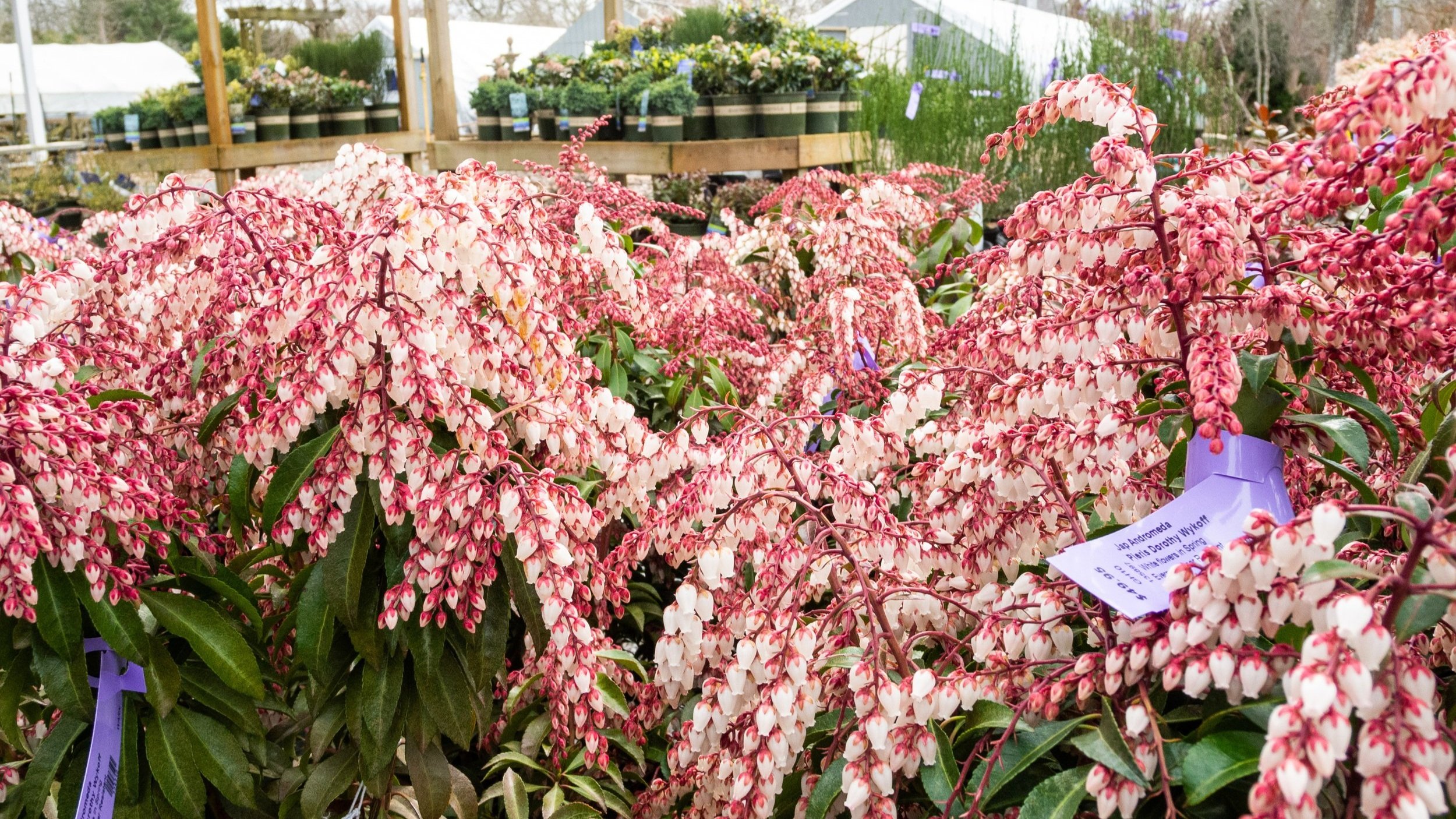
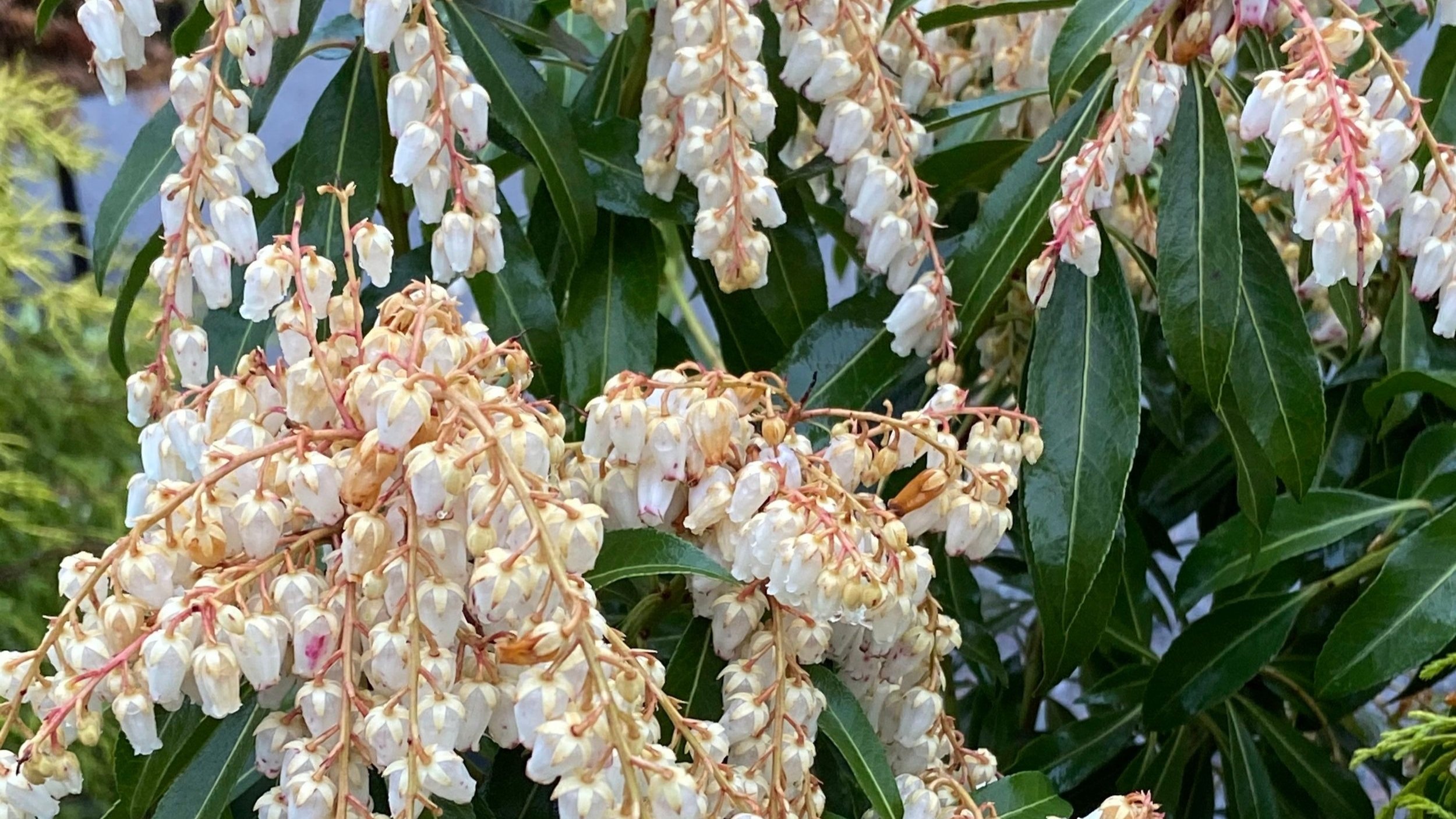
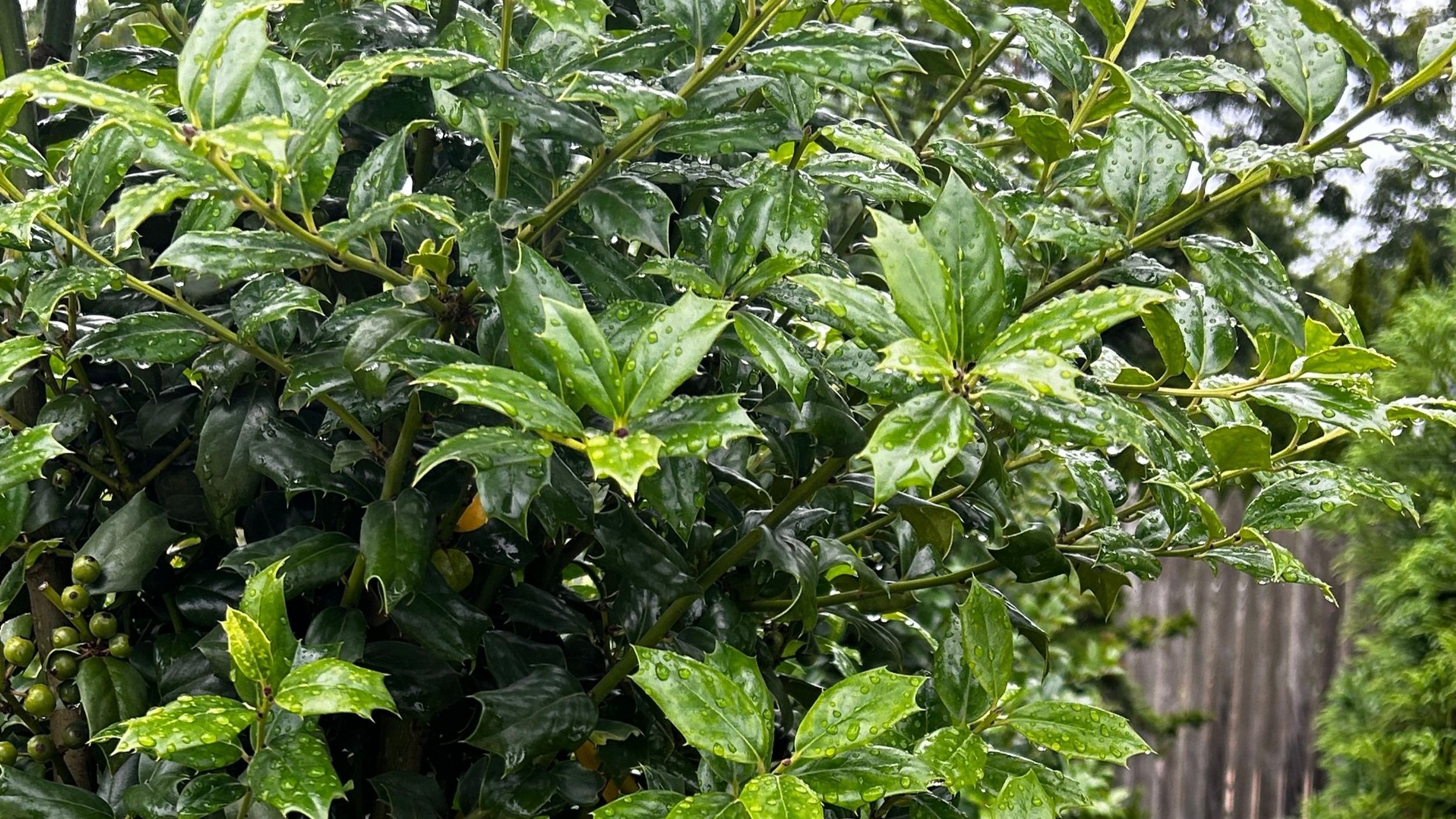

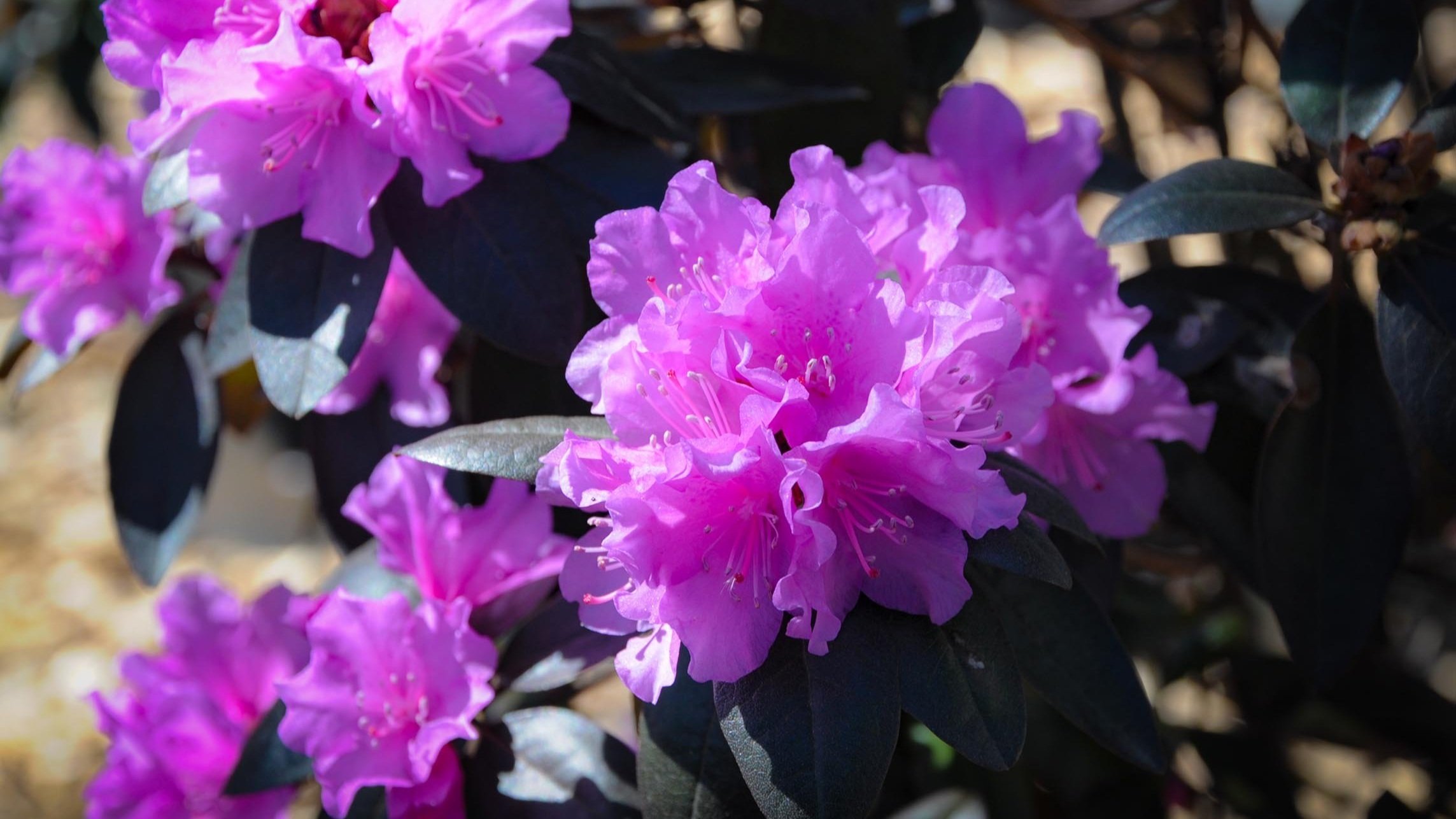
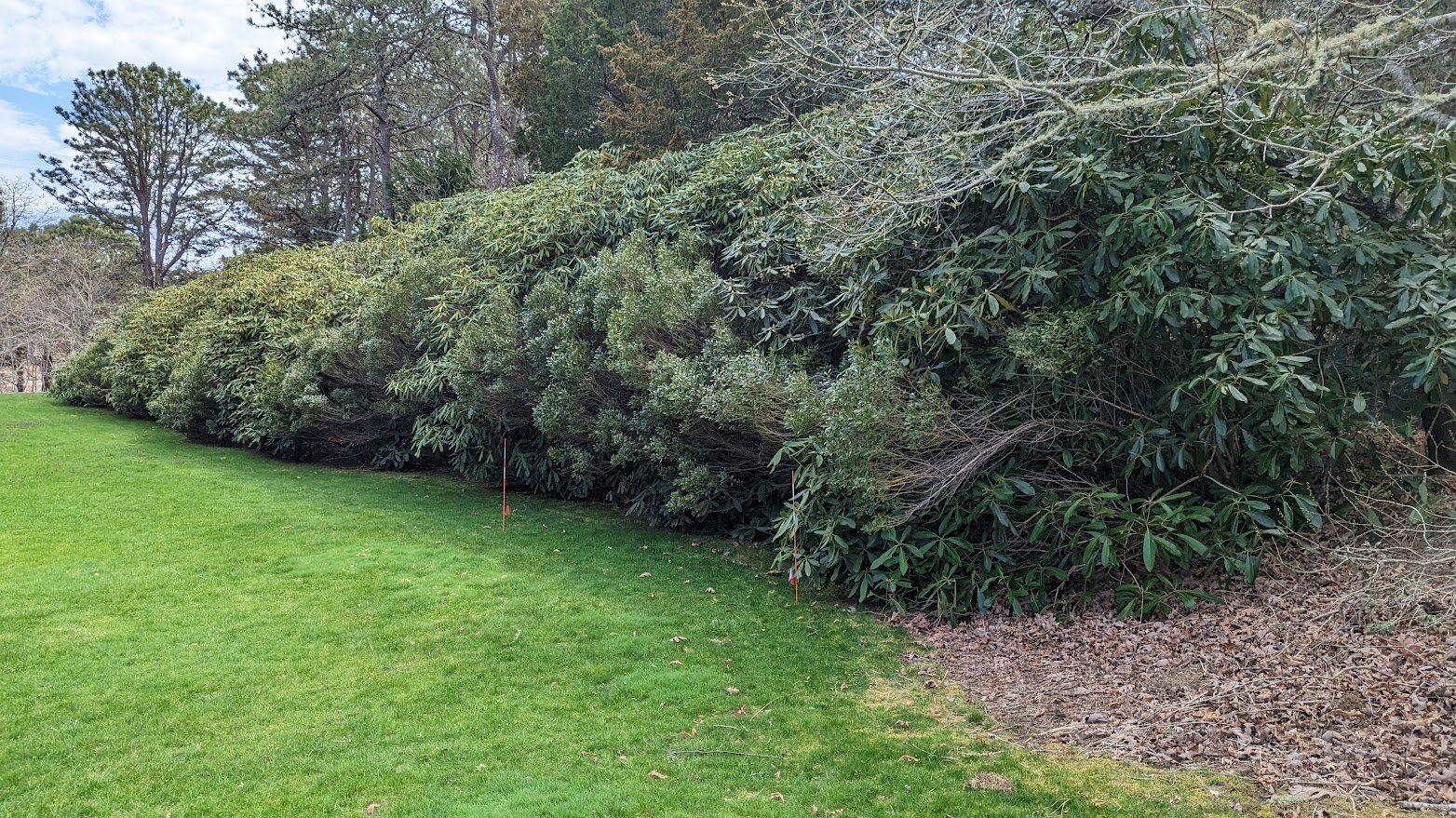
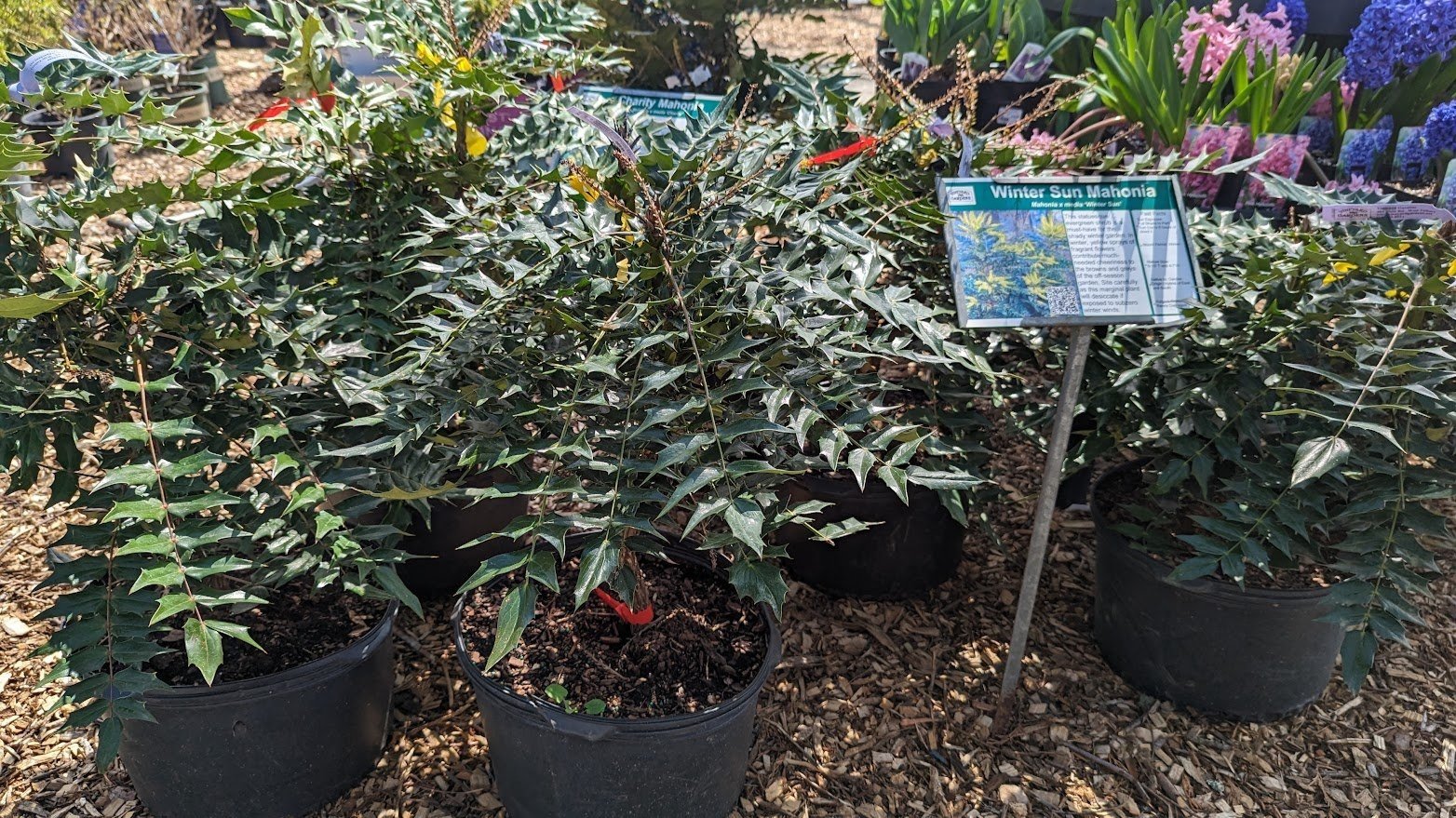
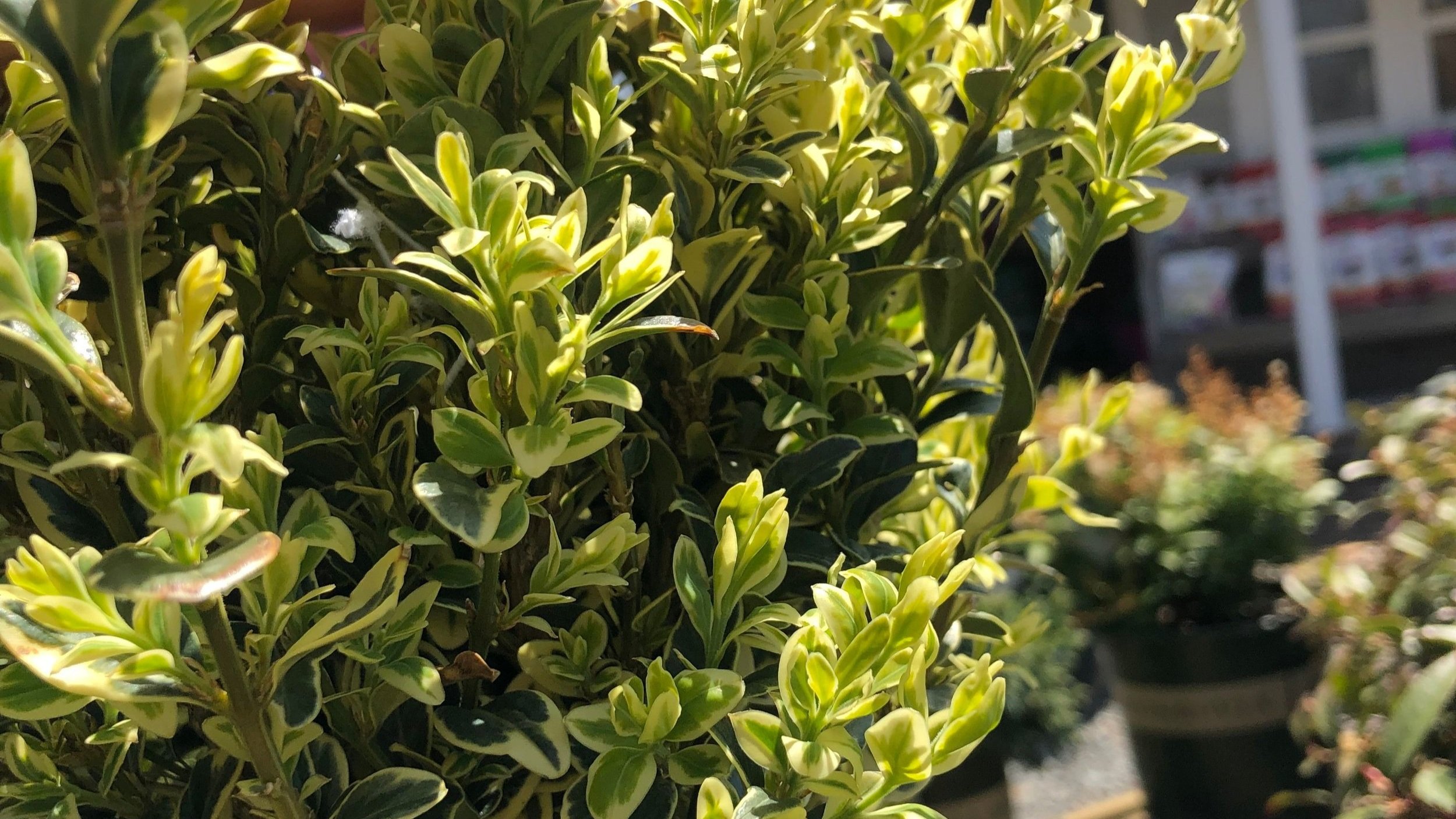
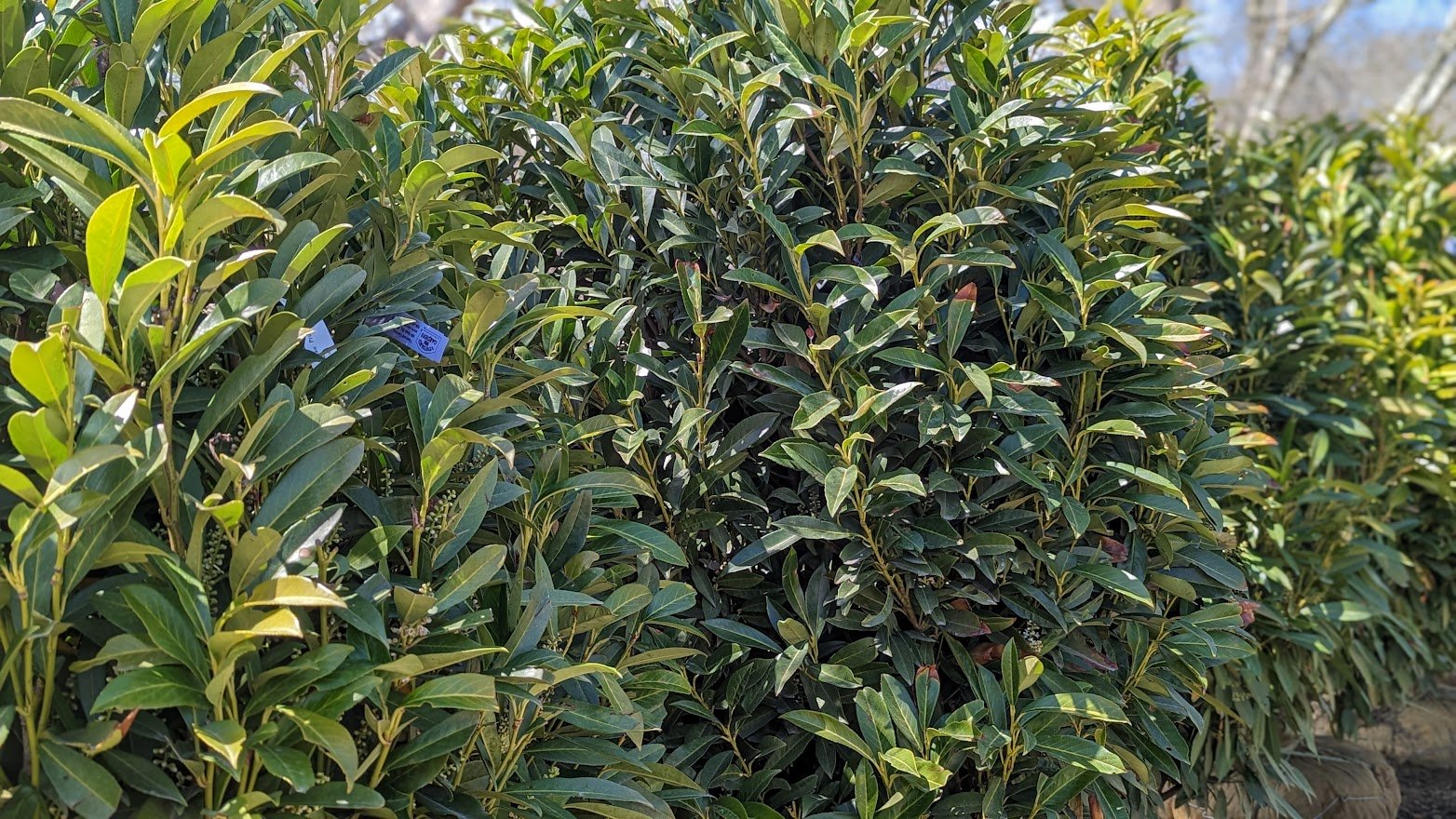
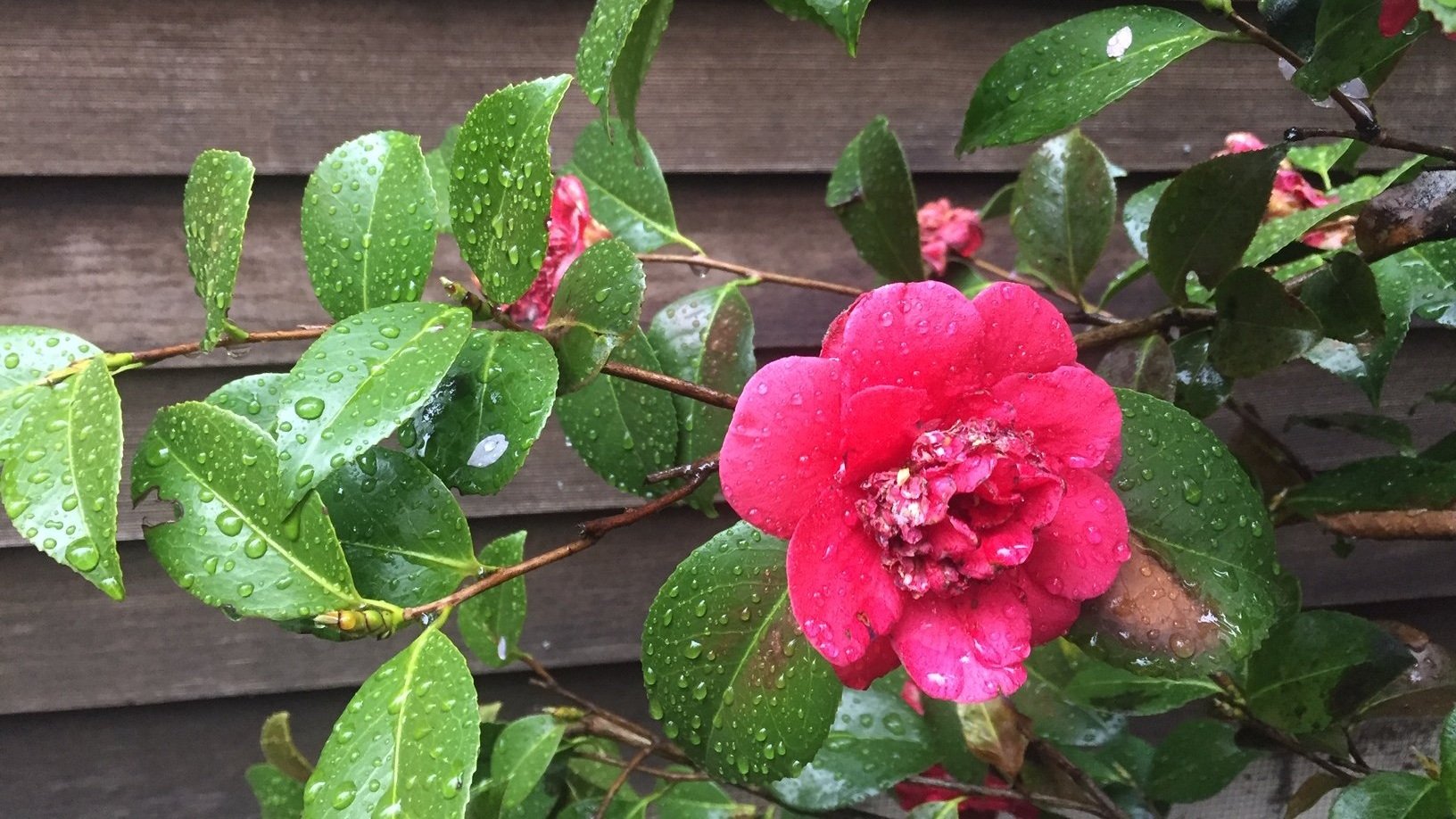
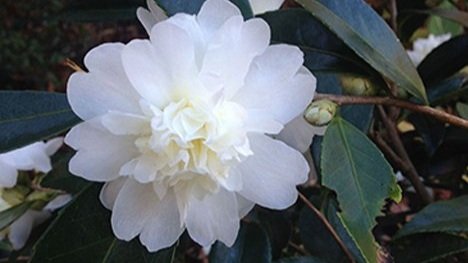
In general we do not recommend you plant conifers in shade. They may not die but they will grow long and leggy. Your much better off planting a Holly, Mahonia or Osmanthus (if you have deer).
for trees and shrubs
for landscacping






